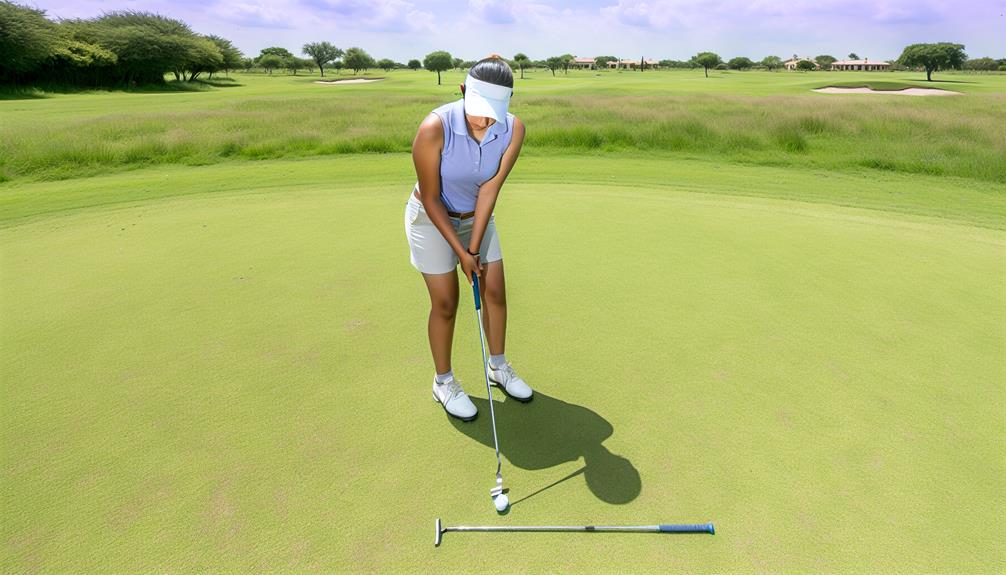Isn't it a coincidence that you're here, exploring the world of golf and its nuances, when putting — the final, decisive move in a game — is often its most overlooked aspect? As you step onto the green, there's much more at play than meets the eye.
You're not just hitting a small ball into a slightly larger hole; you're applying a highly technical skill that requires precision, control, and the right technique. Without mastering the art of putting, even the best golfers can find themselves coming up short.
So, why is proper putting so important and how can it transform your game? Stay with us, and you'll discover the untold secrets of this critical golfing skill.
Understanding Golf's Putting Rules
Before you can excel in your putting game, it's crucial you understand and abide by golf's specific putting rules. These rules dictate everything from the type of stroke you use to where your ball must be played. Mastering these rules isn't only essential for improving your game, but it's also vital for avoiding putting penalties. A single misstep can result in a stroke being added to your score, and nobody wants that.
Your choice of putting equipment can significantly impact your performance. From the weight of your putter to the type of ball you use, every detail matters. For example, a heavier putter can provide more control, but it might also hinder your ability to make longer putts. On the other hand, a lighter putter might allow for more distance but could also compromise accuracy.
Moreover, the rules state that once you've addressed the ball, you can't change your mind or reposition it without incurring a penalty. So, it's essential to carefully analyze your shot before settling into your stance.
Basics of Correct Putting Technique
Often, mastering the basics of correct putting technique can significantly enhance your golf game, allowing for more accuracy and control during play. It's essential to understand grip control and putting drills, as both play a pivotal role in refining your technique.
Grip control is the foundation of a solid putt. Your hands should be relaxed, yet firm, forming a 'V' shape that points to your right shoulder for right-handed players, and vice versa for left-handed players. This grip control ensures the clubface remains square to the target line, reducing the chance of mis-hits.
Putting drills, on the other hand, are exercises designed to improve your putting skills. You can practice different drills like the 'gate drill' which helps improve your accuracy by putting through a gate made of two tees. Or perhaps the 'distance control drill', which aids in gauging the power needed for various putt distances.
Impact of Incorrect Putting
While mastering grip control and putting drills can significantly enhance your golf game, it's equally important to understand the ramifications of incorrect putting techniques. Putting mistakes can have a significant impact on your performance, often leading to stroke penalties. Let's delve into the details.
When you don't use the correct technique, your putts may deviate from the intended line, causing you to miss the hole. This not only increases the number of strokes on a single hole but also disrupts your rhythm and confidence. Moreover, incorrect putting can cause inconsistencies in your game, making it difficult to predict the ball's path.
Repeated putting mistakes can lead to stroke penalties, adding points to your score. In golf, the goal is to have the lowest score, so these penalties can seriously hamper your success. Furthermore, stroke penalties can lead to frustration and dissatisfaction, negatively affecting your overall enjoyment of the game.
Avoiding these pitfalls requires a keen understanding of the correct putting techniques. Remember, a good putt isn't just about getting the ball into the hole; it's about controlling the speed, direction, and distance in a consistent and predictable manner. So, always strive to hone your putting skills to avoid these detrimental impacts.
Advantages of Proper Putting
Mastering the art of proper putting can drastically transform your golf game, offering numerous advantages from improved accuracy and consistency to lower scores and increased confidence on the green.
A key aspect of the advantages is the putting psychology. The mental side of putting is often overlooked, but it's crucial to success. With proper technique, you're more likely to maintain a positive mindset, reducing the pressure and anxiety that can hinder performance. You'll have the confidence to make those crucial putts, knowing that your technique won't let you down.
Personalized putter fitting is another advantage that can't be understated. A putter that fits you perfectly will enhance your stroke mechanics, leading to more accurate and consistent putts. You'll see a significant reduction in the number of putts per round, translating to lower scores.
In addition, the improved consistency from a refined technique will eliminate the frustrating variability in your putting game. You'll find that your shots are more predictable, giving you a sense of control and certainty. This won't only boost your confidence, but also help you to better strategize and plan your shots, giving you an upper hand over your opponents.
Tips to Improve Your Putting
Now that we've explored the advantages of proper putting, let's move onto practical ways you can enhance your technique and bring those benefits to your game.
Firstly, grip adjustments can have a significant impact on your putting performance. A common mistake is gripping the putter too tightly, which can hinder smooth strokes. Try adjusting your grip to be more relaxed and see how it improves your control. Remember, the grip should be firm enough to maintain control, yet gentle enough to allow fluid motion.
Secondly, understanding different putting surfaces is paramount. The speed and direction of your putt can greatly vary depending on the type of surface you're playing on. For instance, a fast green typically requires a softer stroke than a slow green. Therefore, adapting your putting strategy based on the characteristics of the putting surface can significantly lower your scores.

